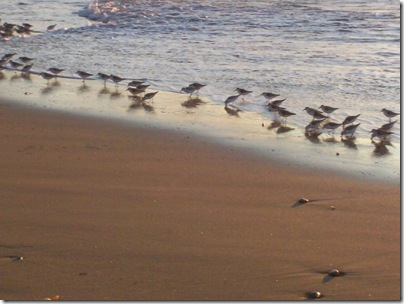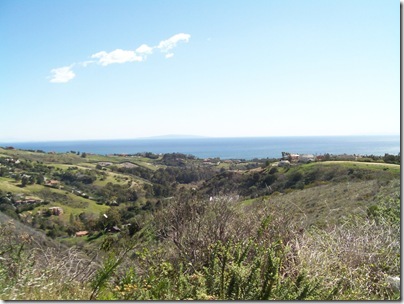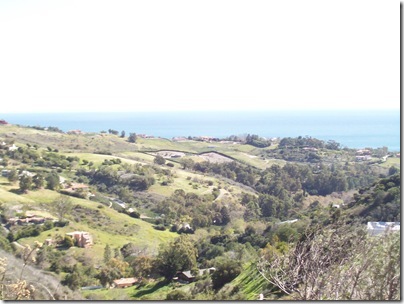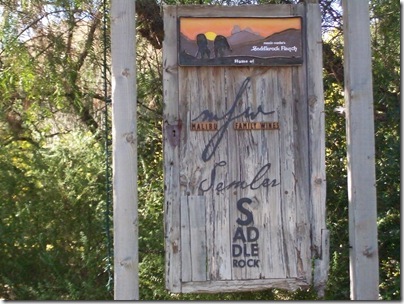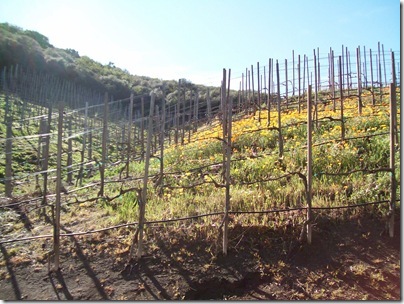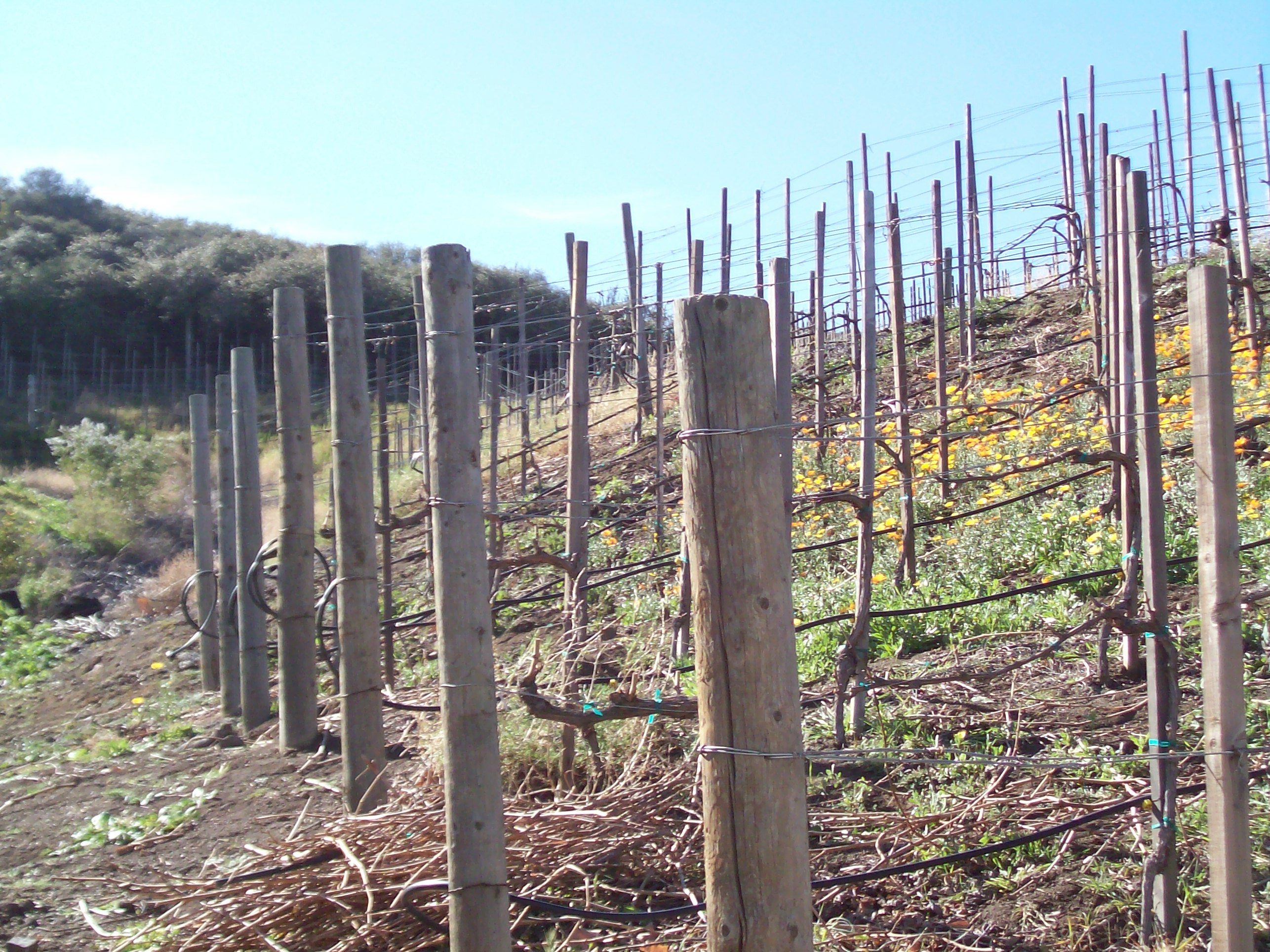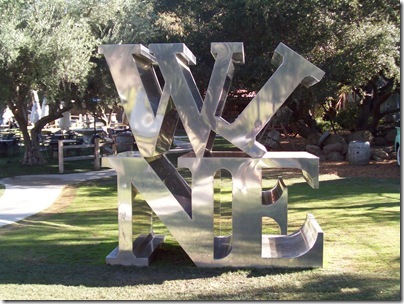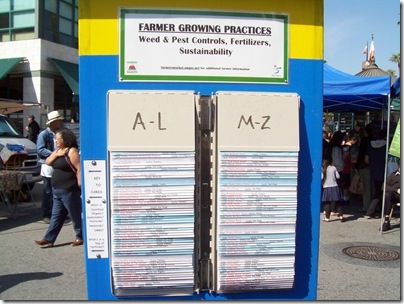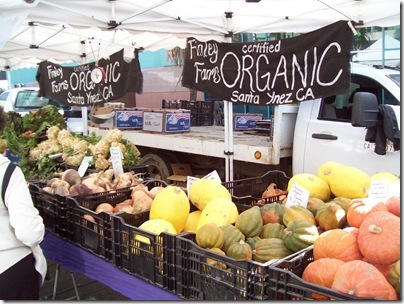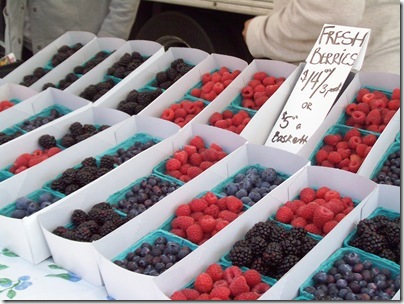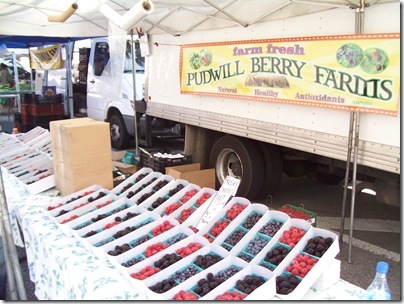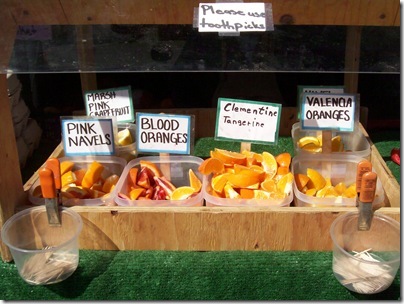If you haven’t caught up on the first parts of this story, I am chronicling the opening of the restaurant, The Keys, by Chef Bill Seleno. You can start at this introduction post, then read about the concept and the menu. In the last few weeks, Chef Bill took an adventure out to California to learn more about food sustainability, real farm-to-table cooking, and brewing beer.
Bill believes that clean food is very important and that no place lives this ideal more than California. He calls the concept “True Food” and it’s all about being honest and transparent about where food comes from. He is looking to bring this into every facet of The Keys.
And come on… if you’re going to do some R&D for a restaurant, there are few better places to do it than Southern California:
Chef Bill was kind enough to send me his pictures from his trip. So all images included in this post are courtesy of Chef Bill. (I especially love his picture of sandpipers above… I love birds almost as much as I love food.)
Bill took the nomadic approach and hiked his way through the (beautiful) area.
He stopped by the Malibu Family Vineyards where he met up with owners/sommeliers, Tammy and Ron Semmler.
In his own words, Bill tells me about his adventure:
“After hiking miles from Pacific Coast Highway to Mulhalland Highway through brushfires, police blockades and closed highways I made it to Malibu Wines.
They are nestled on five acres in the Saddle Rock-Malibu AVA [American Viticultural Area] about 6 miles from the Pacific Coast Highway on what used to be an avocado plantation. The Semmler’s have owned the property since 1978 and converted it from an avocado farm to a vineyard after a severe freeze wiped out the plantation. After doing some research they found that the soil was perfect for wine production. The high altitude with separation from the coast, perfect Cali weather, and rocky soil allow them to produce wines very reminiscent of the Rhone Valley.
So, the Semmler’s are growing in Malibu and production takes place in San Luis Obisbo. Currently they have applied to begin production there at the vineyard making them one of only 3 other vineyards in the area to be doing so (Aquadulce and San Antonio are the others). 2000 brought on their first vintage. They currently are producing two labels, Saddle Rock and Semmler. Six labels under the Semmler line and six under the Saddle Rock. The Saddle Rock line includes a Rose and a Blanc de Blanc sparkling wine.
Of the two I tasted, four were from the Saddle Rock line and here is what I got…
2009 Saddle Rock Pinot Noir: Tea Leaves and Strawberries on the nose, sweet not overly ripened red cherry and spice on the tongue adding a fresh bit of tartness on the pallet. It is aged six months in french oak and finishes with a hint of vanilla and earthiness. Light by Pinot standards with but a nice back of the tongue fullness.
2010 Saddle Rock Merlot: My favorite of the line. It holds a dark ruby red color with an assertive fruit nose of Blackberry and Plum. It’s medium body was accented with ripe Raspberry and Tahitian Vanilla leads into a smooth and supple finish with touches of tobacco, wet rock and caramel.
2009 Saddle Rock Syrah: This is their inaugural vintage of Syrah. Deep purple color with a nose of Blackberry, Blueberry, and a hint of Vanilla. It’s a medium to full bodied wine with dried Cherries being most predominant. the finish had some light tanins with what is best described as Chocolate covered Espresso beans and a hint of Star Anise.
2009 Saddle Rock Petite Sirah: This one had the same deep purple color with Blackberry and and Violet on the nose. It was jammy on the palate with smooth tanins that left notes of Blueberry, Black Licorice, and Plum on the palate. Balancing it all out were the accents of moss and a touch of the attic.
Overall a smooth selection of young fruity wines that were well balanced. There are now over 70 privately owned vineyards in the region and growing as more land becomes available. The one thing that stood out was their devotion to the preservation of the area. They limit growing area to individual producers ensuring that the region is not decimated.”
As Bill hiked back down from the vineyard (which, apparently, is something that most people do NOT do according to the cops that drove up to him to inquire what the heck he was doing), he stopped by a farm he had passed earlier in the day, which was advertising balsamic lemonade. He determined that he had to try this and found himself at Vital Zuman Sustainable Farm. It is a Certified Naturally Grown Farm owned by Alan Cunningham. It sits on 6 acres of land that his family has owned since the 50’s. He produces over 21 types of fruit and a full array of winter and summer vegetables. In addition to the fruit and vegetables that he grows, he also produces his own raw honey by the beehives he keeps there. He pickles his own vegetables as well.
Chef Bill found his way to Santa Monica which he found very touristy, other than a dive bar called Gas Lite Karaoke Bar where he found out that Jim Morrison is actually still alive according to a haggard regular (there’s hope Doors fans!) After this adventure with the locals, he discovered the real attraction in Santa Monica: The Farmers’ Market. The market operates on Saturdays from 8am until 1pm and is located on Main Street. There are over 102 restaurants in the area that shop and support the farmers markets regularly for their produce.
I personally visited this Farmer’s Market a number of years ago and still remember how impressed I was with it. Gorgeous produce and flowers… strawberries have never smelled that good since.
With a focus on the 1920’s as the theme of the restaurant, tying into “True Foods” is a no-brainer. In the 1920s, everything was local and sustainable by default. It was before chemicals and hormones became part of food production (now… manufacturing). When all farms were “free range” because no one had determined it was more cost effective to put chickens in tiny pens and pump them full of chemicals to make their breasts so large that they can’t even walk. The products came right to your door, every day, from a local farm. Honest farm-to-table food.
Bill wants to focus on this real, true type of farm-to-table. Any Farmer’s Market can call their food “right from the farm” but just because it’s a farm, it does not mean it is necessarily organic, sustainable, or chemical/hormone free. Many Farmer’s Markets we see in NY have food that is more marketing than it is the “local” good food they want to say it is. Sure their hogs may be free range, but is their feed chemical free? (To learn more about this, check out this link and this link posted by Chef Bill on The Keys Facebook page.) At the Santa Monica Farmer’s Market, they are very particular about being completely transparent about growing practices, including chemicals and sustainability.
In his own words, here is how Bill described it:
“While I was there I ran into a couple farmers that I had called prior to my leaving and a couple more stands that stood out. Lindner Bison being one of them where I met with Kathy Lindner. They sell in five of the local markets. I recently found out that there is a Bison farm in Long Island. I think this is the cut I will be using for the slider. Lindner is 100% grassfed, sustainable, no hormones, no chemicals, no feedlots or mobile feeding tubs, and no pesticides. Bison meat as a whole has less cholesterol, calories, and fat. Yet, at the same time has more Omega 3’s and more protein, nearly twice that of Beef. In addition to that there is less shrinkage in cooking. This will allow me to keep the cost down as I will be cutting it with Marrow… On a funny note, while we were speaking a woman shopping for some top-round told me that her Bison converted her vegan husband. A lot of info can be found at www.eatwild.com on the practices of grassfed foods.”
Bill wants to bring this “True Food” mentality to The Keys. His goal is to have a website that breaks down his ingredients, their source, and facilitates conversations with their producers. He wants to put together a co-op style partnership between small, local farms and restaurants. For example, he would organize a truck to stop by multiple farms and then sync that up with multiple restaurants to buy their ingredients.
It will take a lot of homework and organization, but that is part of what he is working on now. By the time the restaurant opens, he wants to have established this network.
After exploring the LA area, Bill made his way to San Diego where he became fully immersed in the culture of Craft Brewing. He was enthralled that there is a group of craft beer enthusiasts who will send out a mass text message to insiders who are “in the know” to come to a certain bar at a certain time to enjoy the one remaining keg of a very specific beer. It is like a flash mob where they all come, enjoy the beer, and then disperse. They “live, drink, breathe” craft beer and it is part of their culture. It is a movement and a way of life for this group in San Diego. According to Bill, comparatively the craft beer movement in NY is years behind. He was especially excited about his meeting with Pizza Port, an award winning craft brewery. Bill plans set up his own small microbrewery at the restaurant so that he can brew his own batches with the help of some of the people he met.
I am excited to see all these ideas come together, and especially excited to be along for the ride on this great project.

